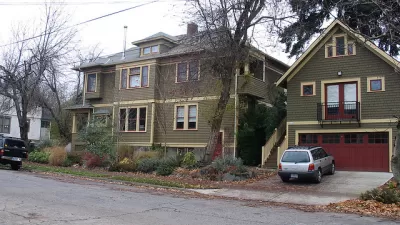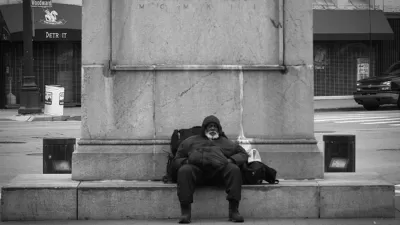The tiniest house anyone has ever seen.
Some researchers are working to ensure the world imagined in the 2017 movie Downsizing becomes a reality.
A Science Daily post shares news of a new study published in theJournal of Vacuum Science and Technologythat claims ownership of the world's smallest house.
The house is the proof of a new frontier in optical nanotechnologies. French researchers created a nanofactory that "builds microstructures in a large vacuum chamber and fixes components onto optical fiber tips with nanometer accuracy." With that power, researchers built a microhouse.
"Building a microhouse is like making a giant dice from a piece of paper, but nanoassembly requires more sophisticated tools. The focused ion beam is used like scissors to cut or score the silica membrane "paper" of the house," according to the article announcing the technological breakthrough. "Once the walls fold into position, a lower power setting is selected on the ion gun, and the gas injection system sticks the edges of the structure into place. The low-power ion beam and gas injection then gently sputters a tiled pattern on the roof, a detail that emphasizes the accuracy and flexibility of the system."
We're pretty sure the microhouse is not anything planners need to worry about writing into zoning codes…not yet, anyway.
FULL STORY: Robotic assembly of the world's smallest house -- Even a mite doesn't fit through the door!

Trump Administration Could Effectively End Housing Voucher Program
Federal officials are eyeing major cuts to the Section 8 program that helps millions of low-income households pay rent.

Planetizen Federal Action Tracker
A weekly monitor of how Trump’s orders and actions are impacting planners and planning in America.

Ken Jennings Launches Transit Web Series
The Jeopardy champ wants you to ride public transit.

California Invests Additional $5M in Electric School Buses
The state wants to electrify all of its school bus fleets by 2035.

Austin Launches $2M Homelessness Prevention Fund
A new grant program from the city’s Homeless Strategy Office will fund rental assistance and supportive services.

Alabama School Forestry Initiative Brings Trees to Schoolyards
Trees can improve physical and mental health for students and commnity members.
Urban Design for Planners 1: Software Tools
This six-course series explores essential urban design concepts using open source software and equips planners with the tools they need to participate fully in the urban design process.
Planning for Universal Design
Learn the tools for implementing Universal Design in planning regulations.
Ada County Highway District
Clanton & Associates, Inc.
Jessamine County Fiscal Court
Institute for Housing and Urban Development Studies (IHS)
City of Grandview
Harvard GSD Executive Education
Toledo-Lucas County Plan Commissions
Salt Lake City
NYU Wagner Graduate School of Public Service




























